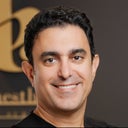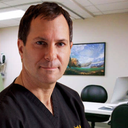Posted underEyelid Surgery q&a
I need help with festoons in NYC: I'm looking for nonsurgical options, any suggestions? (Photos)
I am starting to get festoons. Some days they barely appear at all -- other days I literally look like someone punched me in the face because they are blue. I am in good shape and eat and extremely healthy diet (vegan and not much salt or alcohol). I also avoid the sun and have been wearing sunblock my entire adult life. I am looking for a procedure in NYC with very very very little downtime. I heard radiofrequency micro-needling may be a good fit. Looking for a doctor to consult with in NYC.
Answers (7)
From board-certified doctors and trusted medical professionals
Dr. Zoran Potparic, MD

Dr. Zoran Potparic, MD
Board Certified Plastic Surgeon
Answer
Dr. Adam Scheiner, MD

Dr. Adam Scheiner, MD
Oculoplastic Surgeon, Board Certified in Ophthalmology
Answer
Dr. Jason Emer, MD

Dr. Jason Emer, MD
Dermatologic Surgeon, Board Certified in Dermatology
Answer
Dr. A.J. Amadi, MD

Dr. A.J. Amadi, MD
Oculoplastic Surgeon, Board Certified in Ophthalmology
Answer
Dr. Kenneth D. Steinsapir, MD

Dr. Kenneth D. Steinsapir, MD
Oculoplastic Surgeon, Board Certified in Ophthalmology
Answer
Dr. Camille Cash, MD
Dr. Camille Cash, MD
Board Certified Plastic Surgeon
Answer
More Eyelid Surgery Questions
See all Eyelid Surgery Q&AWE SEND PRETTY
EMAILS
What’s trending? Who’s turning heads? Which TikTok myths need busting? We’ve got you. No fluff, no gatekeeping—just real talk. Get our free, unfiltered newsletter.
